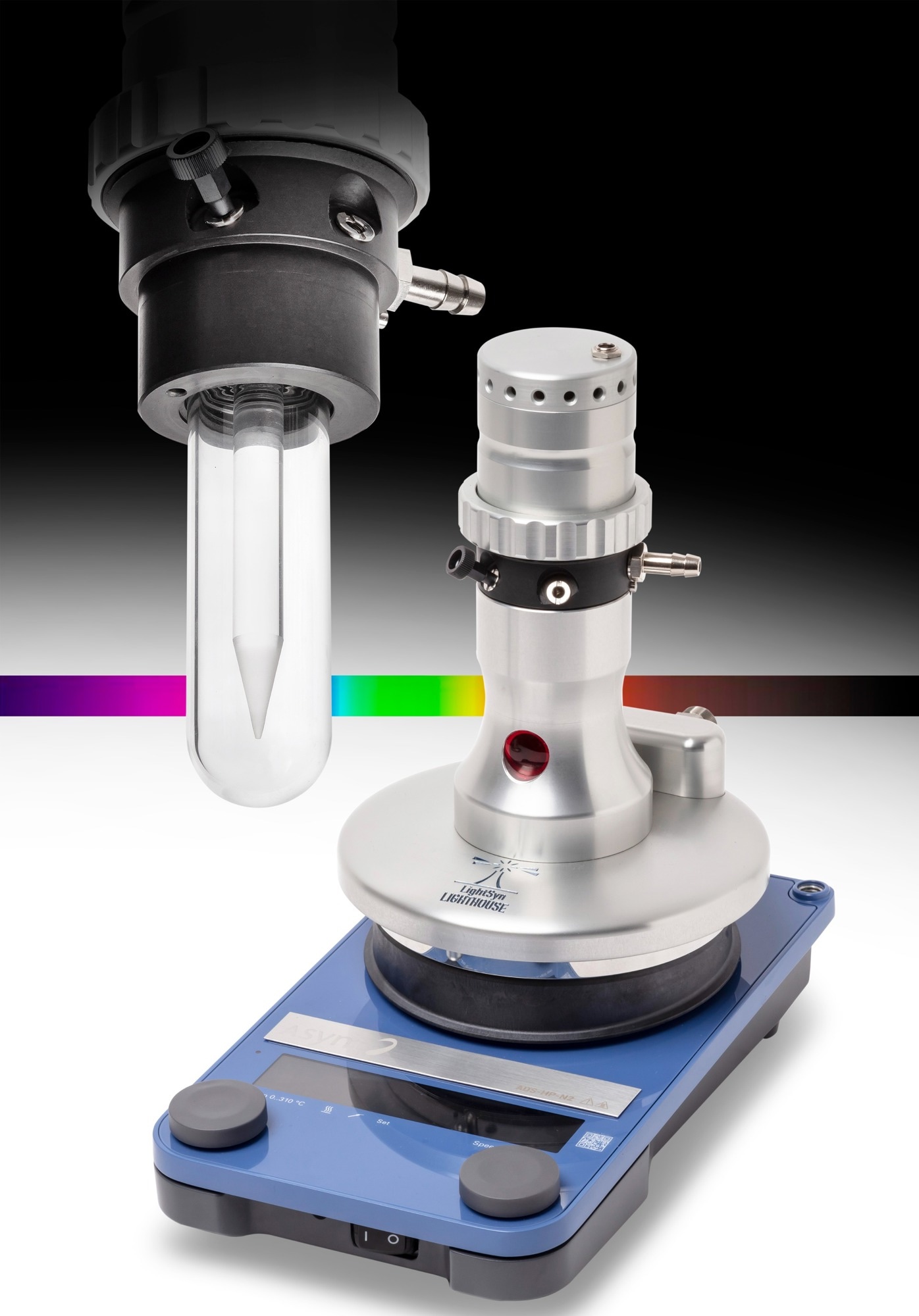From AsyntReviewed by Louis CastelNov 30 2023
Asynt have announced the expansion of the LightSyn Lighthouse photochemistry platform with extensive range of additional wavelength modules.
 Wide expansion of wavelength options for unique LightSyn Lighthouse photoreactor from Asynt. Image Credit: Asynt
Wide expansion of wavelength options for unique LightSyn Lighthouse photoreactor from Asynt. Image Credit: Asynt
To meet customer demand, Asynt are now offering 11 different wavelength options for those carrying out photochemical reactions with the LightSyn Lighthouse.
In addition to the original options of 460 nm and 365 nm that the platform was launched with earlier this year,users may now choose from lamp modules in 390 nm, 395 nm, 410 nm, 523 nm, 590 nm, 623 nm, 740 nm, 850 nm, 940 nm, and cool white LEDs.
The Lighthouse uniquely channels the light produced by these modules through a quartz light pipe directly into the sample, thus reducing the distance light travels from the LED to almost zero. This increases the power to which the medium is exposed and significantly improves photon flux efficiency without adding additional heat generated from the electronics.
The LightSyn Lighthouse is an easy-to-use device with built-in safety features to minimise exposure risks, including a useful microswitch that prevents light from being emitted if the device is not sealed. Asynt also offer a heating/cooling base for the LightSyn Lighthouse which, when used with an appropriate circulator, enables accurate temperature control from -30 ᵒC to 80 ᵒC.
With a single power supply and standard fittings, those wishing to carry out photochemical reactions can do so safely with a quick setup process and achieve repeatable results – all features that common “homemade” photochemistry systems leave users wanting for.
Asynt’s ethos of providing laboratory tools “By chemists, for chemists” is instrumental in the design of this photoreactor. The platform allows straight-forward customisation for a variety of uses including gas reactions/bubbling, programmed reaction management, sample addition or removal and potentially flow chemistry set-ups with multiple LightSyn Lighthouse units.